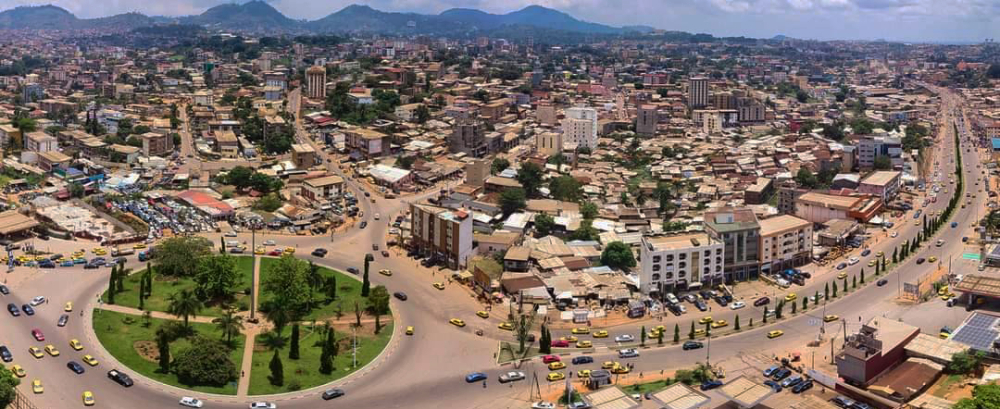
Chad
April 12, 2025
Gabon
April 12, 2025Cameroon, located in Central Africa, is a resource-rich country with a wide variety of mineral resources that contribute to its economy. While oil is one of the main contributors to GDP, Cameroon has significant reserves of other minerals such as bauxite, iron ore, and gold. Despite its mineral wealth, the mining sector in Cameroon is still underdeveloped, and much of its potential remains untapped. Here’s an overview of the key mineral resources in Cameroon:
Key Mineral Resources
- Oil and Natural Gas:
- Overview: Oil is one of the most significant natural resources in Cameroon and has been a key contributor to the country’s economy for decades. Natural gas is also found in significant quantities.
- Major Oil Fields: Oil production is concentrated in the Rio del Rey Basin and the Douala/Kribi-Campo Basin, located in the Gulf of Guinea off Cameroon’s coast.
- Reserves: Cameroon has substantial proven oil and gas reserves, with ongoing exploration activities to further develop the sector. The oil sector is a major contributor to export revenues and government income.
- Bauxite:
- Overview: Bauxite, the primary ore for aluminum, is a key mineral resource in Cameroon. The most significant bauxite deposits are located in the Minim-Martap and Ngaoundal areas in the Adamawa region.
- Reserves: Cameroon has significant bauxite reserves, particularly in the Minim-Martap deposit, which is one of the largest untapped bauxite deposits in Africa. The government is actively seeking investment to develop this resource.
- Iron Ore:
- Overview: Cameroon has large deposits of iron ore, particularly in the Mbalam and Nkout regions. Iron ore is essential for steel production.
- Reserves: Cameroon’s iron ore reserves are extensive, particularly in the Mbalam region, which has high-grade deposits. The Mbalam-Nabeba Iron Ore Project, located on the border between Cameroon and the Republic of Congo, is a significant undeveloped iron ore resource with export potential.
- Gold:
- Overview: Gold mining is a growing sector in Cameroon, with both artisanal and small-scale mining and larger industrial projects.
- Major Gold Mining Areas: Gold deposits are found in the eastern and northern parts of the country, particularly in the Adamawa, East, and North regions. Artisanal mining is especially active in the East Region.
- Reserves: Cameroon’s gold reserves are substantial, but much of the mining activity is artisanal. Industrial mining is being developed to tap into larger reserves.
- Diamonds:
- Overview: Cameroon has diamond deposits, particularly in the eastern part of the country. The sector is still largely artisanal, but there is potential for industrial development.
- Major Diamond Mining Areas: The Lom and Dja regions in eastern Cameroon are known for diamond production.
- Reserves: Cameroon’s diamond reserves are moderate, with potential for further exploration and development.
- Limestone:
- Overview: Limestone is abundant in Cameroon, particularly in the southern and western regions. Limestone is a key raw material for the cement industry.
- Reserves: The limestone reserves in Cameroon are adequate to support the local construction industry and cement production, particularly for infrastructure projects.
- Cobalt and Nickel:
- Overview: Cobalt and nickel deposits are found in Cameroon, particularly in the Nkamouna area in the East Region. These minerals are important for high-tech industries.
- Reserves: Cameroon’s cobalt and nickel reserves are significant, particularly in the Nkamouna-Mada deposits, which are estimated to be some of the largest undeveloped cobalt and nickel reserves in the world.
- Uranium:
- Overview: Uranium deposits have been identified in Cameroon, particularly in the Poli region in the northern part of the country.
- Reserves: The uranium reserves in Cameroon are still being explored, with potential for future development, particularly as demand for nuclear energy grows globally.
- Tin:
- Overview: Tin deposits are found in Cameroon, particularly in the Mayo-Darlé area in the Adamawa Region. Tin mining is still largely artisanal.
- Reserves: Cameroon’s tin reserves are moderate, with potential for further exploration and development.
- Other Minerals:
- Clay: Found in various parts of Cameroon, clay is used in pottery, ceramics, and construction materials.
- Marble: Cameroon has deposits of marble, particularly in the northern regions, which can be used for construction and decorative purposes.
Investment and Extraction Situation
- Oil Dominance: The oil sector remains the largest contributor to Cameroon’s economy, attracting significant foreign investment. However, fluctuating global oil prices and the need for diversification have led the government to focus on expanding other sectors, including mining.
- Emerging Mining Sector: While the mining sector in Cameroon is still underdeveloped compared to its potential, the government is actively promoting the exploration and development of bauxite, iron ore, gold, and other minerals. There are significant opportunities for investment in large-scale mining projects.
- Artisanal and Small-Scale Mining (ASM): ASM is prevalent in Cameroon, particularly in gold and diamond mining. ASM provides income for many local communities but is often associated with challenges such as lack of formalization, environmental degradation, and safety concerns. The government is working to regulate and formalize ASM activities.
- Infrastructure Challenges: Infrastructure development is critical for the growth of the mining sector, particularly in terms of transportation and energy. The government is investing in improving roads, railways, and ports to support the export of minerals.
- Environmental and Social Impact: Mining activities in Cameroon must balance economic benefits with environmental and social impacts. Issues such as deforestation, water pollution, and displacement of communities are common concerns. The government is working to ensure that mining activities are conducted sustainably and that local communities benefit from resource development.


